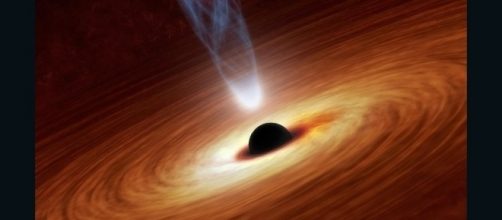For a ten-day period running from April 6 until April 16, there will be eight different radio observatories located in six different places on the Earth's surface that will all be pointed at the center of our galaxy, the Milky Way. Their goal will be to for the first time take photographic evidence of a black hole for the first time in history and if they do it will prove Albert Einstein right in the process.
What and where are these telescopes?
These radio observatories are found at the South Pole in Antarctica, the peak of the volcanic mountain Mauna Kea in Hawaii, on the snowy slopes of the Sierra Nevada mountain range in Spain and at other locations on Earth.
The goal of these telescopes all being pointed at the black hole at the center of the Milky Way together is the images that they could provide, assuming the weather at all the locations holds up well.
Combining the image power of all the telescopes will allow astronomers to collect data at a scale never attempted before in the field of physics, an Earth-sized scale. As Shepard Doeleman, director of the Event Horizon Telescope, put it by using these Event Horizon Telescopes together, astronomers hope to finally be able to "see the un-seeable."
Einstein's prediction
Famous scientist Albert Einstein first predicted black holes in 1916 as part of his theory of general relativity. He predicted that the universe is peppered with gigantic objects that were so dense that not even light could escape from them.
At the time, even Einstein himself was highly skeptical that this theory was true, but in 1971 American astronomer Charles Thomas Bolton discovered the first strong evidence of the existence of black holes at the University of Toronto's Dunlap Observatory. The mission of the telescopes to capture the image of a black hole will be one of the most stringent tests ever for Einstein's theory.
Today, the theory of black holes is so prevalent that astronomers are mostly convinced that almost every galaxy, including the Milky Way, has a massive black hole at its center. If these telescopes succeed, they would capture an image of the event horizon of the black hole, the point of no return. This which would finally give definitive and even further evidence for the first time in history that black holes do in fact exist. It would also be another step to help astronomers understand how black holes rule over and affect entire galaxies.

